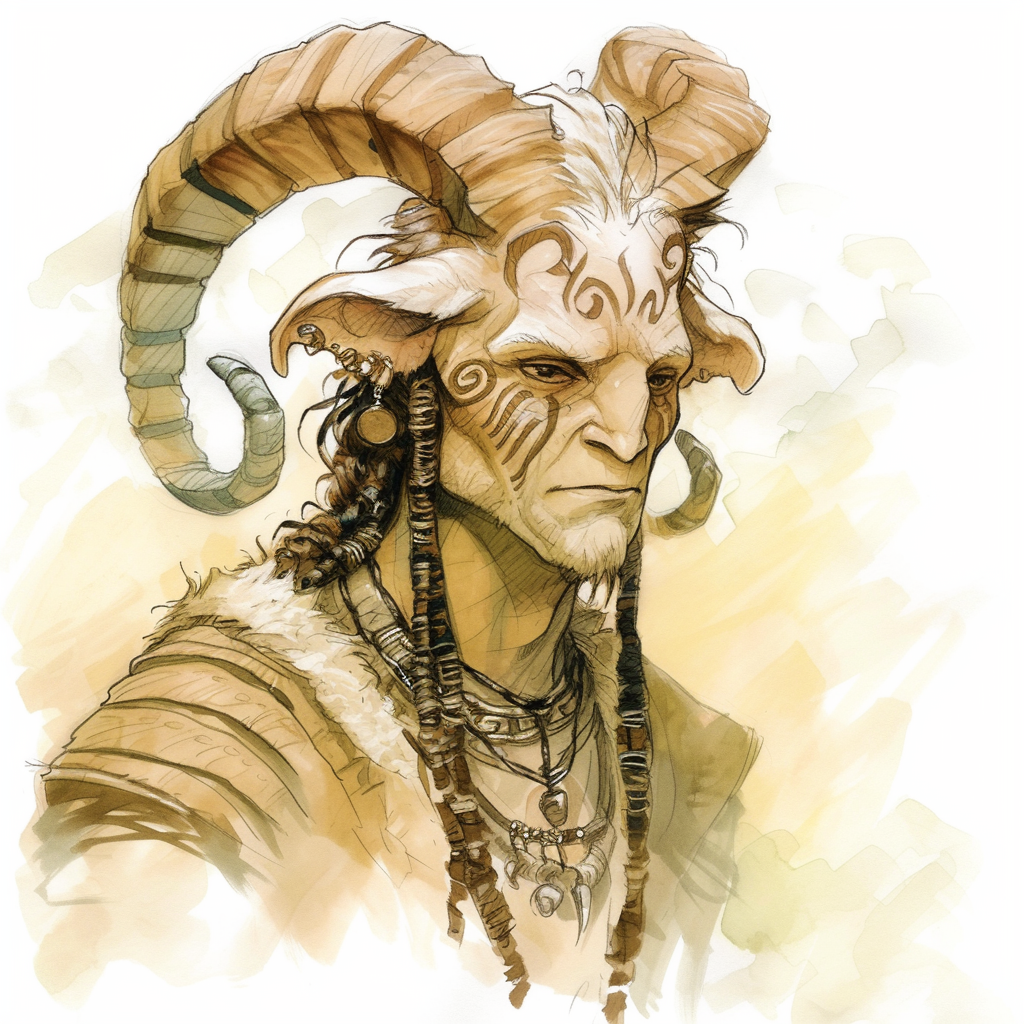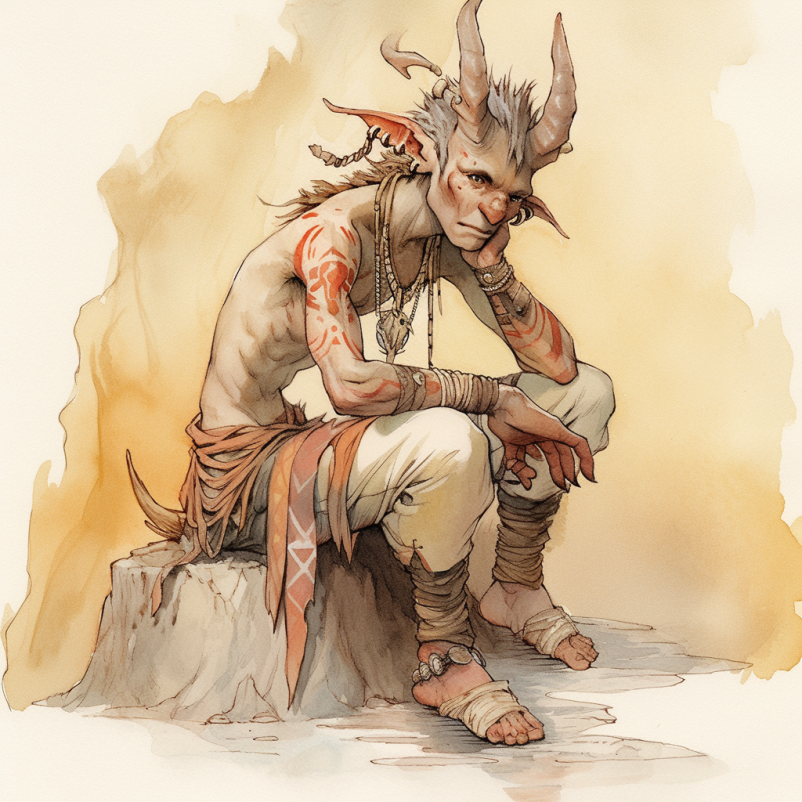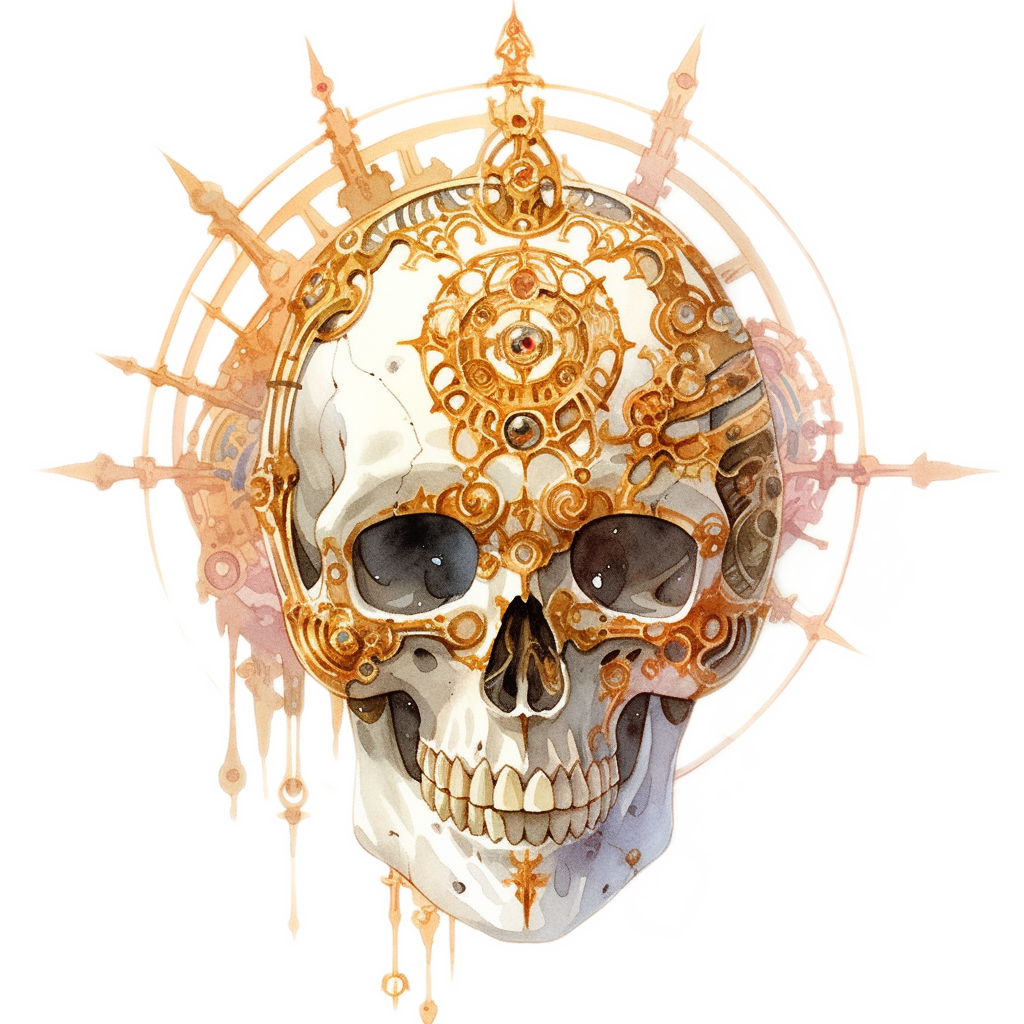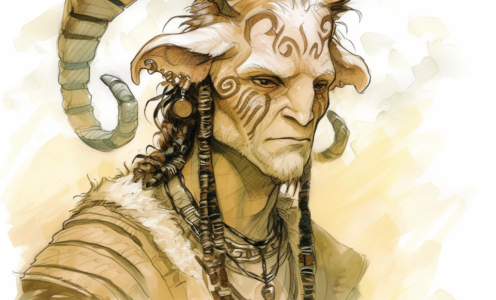The Outlandish Folk
Location: The Outlands
Life in the Ringlands and gate towns of the Outlands offers a stark contrast to the organised pandemonium of Sigil. Compared to the noisy and grimy streets of the Cage, life in the Outlands is more grounded. The constant hustle and power struggles of Sigil give way to a more contemplative and balanced existence in the Outlands. Communities here are more connected to their environment and each other, and while there’s still diversity and conflict, it’s all underpinned by an unspoken agreement to respect the balance of the plane. Outlander communities are often quieter, with a focus on maintaining equilibrium within the burg and with the surrounding environs. The Ringlands, closer to the centre of the Outlands, embody the plane’s philosophy more intensely. Here, life is deeply influenced by the need to keep balance in all things, be it trade, relationships, or politics.
In the gate towns, located near the various portals to other planes, a cutter will find more diversity and vibrancy. These towns act as interplanar crossroads between the Outlands and the Great Ring, leading to each being a melting pot of cultures and customs from the Outlands and the connecting plane. However, even here, the overarching theme is one of balance and neutrality. Extremes in behaviour or belief are often frowned upon or naturally neutralised by the plane’s influence. Not least because if a balance isn’t maintained, the burg is likely to slide through its gate and into the connecting plane.
Planars

In the Ringlands and throughout the Gate Towns, the locals are an eclectic mix of native planars and settlers from across the Great Ring. Humans, dwarves, tieflings and bariaur are the most commonly-encountered folks although creatures from literally any of the planes might turn up here.
The planar humans of the Outlands often seek a life that’s in tune with the plane’s natural balance. Unlike the cosmopolitan chaos of Sigil, life here is more about living in harmony with the environment and one’s neighbours. Outlander communities tend to be self-sufficient, typically valuing cooperation over competition; at least, away from the more philosophically biased Gate Towns. Cutters might be drawn to the Outlands for its philosophical stance on equilibrium, seeking a life that is free from the extremities of other planes.
Outlander dwarves tend to be found in the highland areas around the Moradin’s Anvil; Ironridge, towards Glorium, Bedlam and Xaos. Dwarven burgs tend to be hard to find, being underground and while begrudgingly polite to outsiders, aren’t as cosmopolitan as the surface-towns of the plane.
Tieflings in the Outlands often come seeking a place where they’re not judged by their infernal heritage. In the Outlands, see, one’s nature or lineage is less important than one’s actions and beliefs. The plane’s emphasis on balance gives tieflings a chance to define themselves outside of the typical prejudice they face elsewhere. Of course, if a tiefling is a nefarious sort they might try and take advantage of the natural tendency of Outlanders to give strangers the benefit of the doubt. Once, at least.
The half-humanoid, half-goat bariaur folk seem to find the Outlands particularly appealing. The varied landscapes of the plane provide bariaur with both the open spaces and the rugged terrains they seem to love. Bariaur communities in the Outlands tend to be tight-knit, with a strong emphasis on personal freedom and communal responsibility. Many of them are also nomadic, meaning they don’t appear on any maps. If you want to find a particular bariaur community, the best cutters to ask are the all-knowing rilmani—assuming you can find one of them.
The enigmatic and self-aware githzerai seem particularly drawn to the more chaotic gate towns. In these burgs, githzerai enclaves often serve as bastions of calm amidst the surrounding chaos. Their enclaves are often centres of training and meditation, reflecting the githzerai’s monastic traditions. Githzerai who choose to live on the Outlands typically seek a broader understanding of the multiverse, and a more nuanced knowledge of order and chaos, recognising the importance of balance between the two.
Primes
For many primes, the Outlands can be a bewildering yet captivating experience, a plane that’s simultaneously familiar and utterly alien. The Outlands often remind the clueless of their home on the Prime, only magnified in its grandeur and intensity. The landscapes here are vast and more varied, the colors more vivid, and the skies broader and more expressive. It’s like stepping into a painting that’s been brought to life, filled with wonders and dangers alike.
Once their initial Spireshock has passed, many Prime natives settle in the Outlands for its relative familiarity compared to other Outer Planes. It’s not as rigidly lawful as Mechanus or as chaotically wild as Limbo. It’s not as soul-crushingly miserable as the Gray Waste or as smothering as Elysium. The balance and neutrality of the Outlands can be appealing to those who find the extremes of other planes overwhelming.
What’s more, the Outlands serve as a crossroads to all other Outer Planes, making it an ideal base for explorers, traders, and adventurers. The gate towns, each leading to a different plane, provide unique opportunities for commerce and learning.
Life for the clueless in the Outlands involves a steep learning curve. They must adapt to the local customs, which often emphasise balance and neutrality. This can be a challenge, especially for those used to more black-and-white moralities or the less subtle politics of the Prime. They also learn to navigate the plane’s peculiarities—like the way magic wanes the closer one gets to the Spire, and hard-to-fathom travel times between burgs. For settlers of the Spirelands, this means relying more on wit and skill than on magical prowess.
Many primes find integrating into the diverse communities of the Outlands fairly easy. They may live among humans, elves, dwarves, or more exotic beings like tieflings and bariaur. This integration is often smoother than in other planes due to the Outlands’ inherent acceptance of diversity. However, life here is not without its challenges. The vastness of the plane can be daunting, and its regions are often separated by dangerous terrains filled with bizarre creatures and enigmatic phenomena.
Petitioners

Outlander petitioners—those souls who’ve shuffled off the mortal coil and found themselves reborn here—are a unique lot, steeped deeply in the plane’s three core tenets of balance, harmony, and opposition. Their outlook profoundly influences their personalities and day-to-day existence on the Outlands. It’ll probably come as no surprise to you, but there are three main types of Outlander petitioner.
The Pragmatists: These cutters live and breathe the plane’s philosophy of balance. They’re the sort who keeps a personal balance sheet of their own thoughts and actions, seeking to live the most balanced life they can. If one day they help a cutter being chased by a town guard to escape, you can bet the next time this happens they’ll shop the berk to the Hardheads. Pragmatists also seem to be particularly in tune with their natural surroundings and environment.
The Anodyne: These bashers are best characterised by their equanimity. They’re less likely to be swayed by strong emotions or sudden impulses, displaying a level-headedness that can seem uncanny to outsiders. This isn’t to say they lack passion or drive; rather, they approach their passions with a balanced perspective. They innately understand and accept the concept of finding the point of harmony between extremes. This philosophical leaning is evident in their demeanour—they tend to avoid extreme behaviours or beliefs, seeking a middle path. These bloods are calm in the face of danger, respond with measured thoughts before violence, and are great in a crisis. Uncharitable cutters might say they’re boring or bland.
The Contrarians: Ever met one of those berks who always plays devil’s advocate and seems to disagree with everything you say on principle? That’s what the contrarians are like. Argumentative, hard to please and generally difficult to get on with. On the plus side, they’re supporters of underdogs, friends to the oppressed and genuinely mean well; they just see it as their role to test ideas, plans and philosophies to their breaking points.
In their daily lives, Outland petitioners might contribute to their communities by promoting cooperation and understanding. They are often the mediators and peacekeepers, valued for their ability to see and reconcile different points of view. Their communities tend to be harmonious, with an emphasis on mutual support and collective well-being. Due to their balanced adaptability, petitioners adapt well to the many landscapes and cultures of the Outlands. They’re as comfortable in the bustling gate towns as they are in the more serene Ringlands. This adaptability also makes them excellent guides for planar travellers, able to navigate the complexities of the Outlands with ease.
Many petitioners are drawn to the pursuit of knowledge, particularly in understanding the nature of balance and the multiverse. They might spend their days studying in the vast libraries of the plane, engaging in philosophical debates, or exploring the obscure and diverse regions of the Hinterlands to gain a broader understanding of balance in practice. Spirituality for these cutters often revolves around the practice of balance in personal and communal life. They might engage in rituals or meditations that emphasise equilibrium, seeking to align themselves more closely with the core principles of their plane, and ultimately, to make their final pilgrimage to the Spire and become at one with the plane.
Source: Jon Winter-Holt, mimir.net

